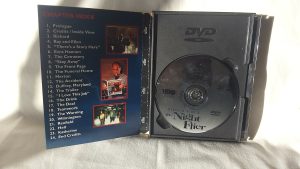
The phrase “digital rights management,” also abbreviated as “DRM,” refers to a method that can be used to prevent the unauthorised dissemination of digital information and software that is protected by copyright laws. DRM typically involves the utilisation of codes that are meant to either prohibit copying or restrict the number of devices that are allowed access to a specific product. This can be done for either of these reasons. In either case, the purpose of these regulations is to safeguard the intellectual property of the goods under consideration.
Microsoft PlayReady, Apple FairPlay, Google Widevine, Adobe PrimeTime, Verimatrix ViewRight, and Marlin are among the most well-known companies in the digital rights management (DRM) business, amongst many more. These companies are among the most notable players in the market. However, in order for these services to operate as intended, the web browsers, operating systems, and casting devices that you utilise must be compliant with the specific requirements that are being imposed by these services. To give you an example, PlayReady would only work in Internet Explorer and Microsoft Edge, whereas FairPlay would not work on any browser besides Safari. It is challenging for content providers to provide all of their consumers with a safe version of their products because there is a lack of uniformity across the different entities involved in the content security industry. One option that can be taken to handle this difficulty is to integrate a number of different DRMs onto a single service. This is only one of several possible solutions. This can be accomplished by deploying complicated logic gates, which, depending on what the customer has asked, can toggle between multiple different DRM methods. Utilizing the service console allows for the application of these logic gates.

Historically, a single digital rights management (DRM) system was responsible for the protection of audio and video content within web browsers. In order for users to access content that was password protected, these approaches required them to download additional browser plug-ins, such as “Flash,” or programmes that were built by third parties first. The new DRM solutions that are utilised today do not rely on these methods, and they are available as cloud-based solutions that can simply be linked with the existing systems that organisations use. Additionally, these modern DRM solutions are readily available. A multi DRM solution will typically include licence management capabilities for a number of distinct digital rights management systems (DRMs), such as Widevine, FairPlay, and PlayReady, amongst others, in order to ensure compatibility with all of the most popular web browsers and computer operating systems. This is done in order to meet the requirements for providing compatibility across a wide range of platforms.
Companies that provide Multi-DRM (also known as DRM as a Service) give assistance with the coding process and have an automated workflow that starts with the input file and goes all the way to the user’s device. It is now possible for the same piece of content to be associated with multiple different digital rights management systems thanks to a technology called MPEG-CENC, which is also referred to as Common Encryption (DRM). This indicates that the video can be encoded as well as encrypted while retaining the ability to use the same key. During the packaging process, the metadata for each of the several DRMs is added; nonetheless, it is the exclusive responsibility of each DRM system to manage the licencing purchase and mapping details on its own. The costs of encryption, asset management, and client licencing have all seen significant reductions as a direct result of the provision of these services.








